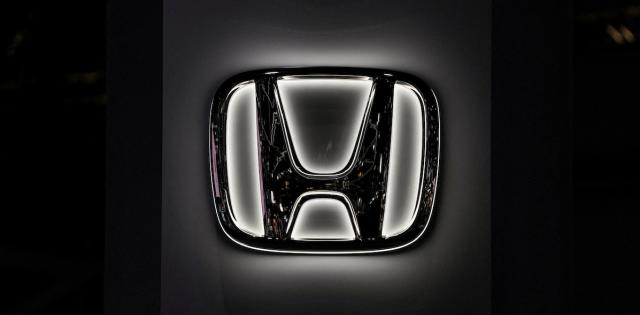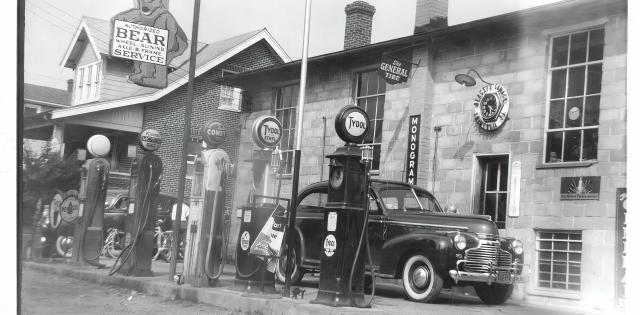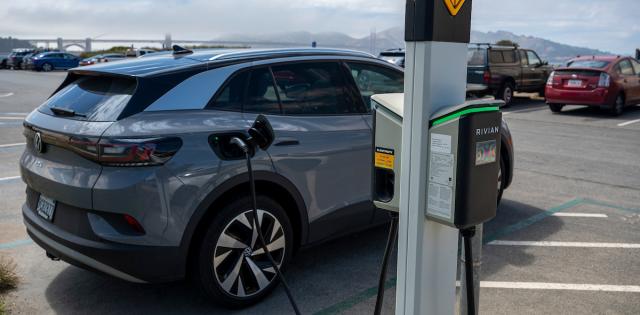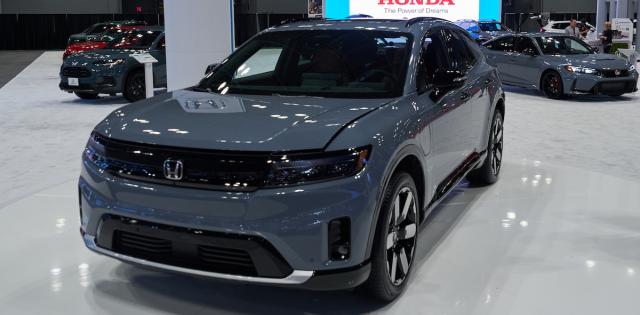The article below is sourced from Bloomberg Wire Service. The views and opinions expressed in this story are those of the Bloomberg Wire Service and do not necessarily reflect the official policy or position of NADA.
Ford Motor Co. CEO Jim Farley is so fed up with being the most recalled automaker in America that he’s willing to lose money to fix what’s ballooned into a $4.8 billion a year problem.
For the foreseeable future, Farley says, the company will hold newly redesigned models for up to six weeks to perform extra quality checks that go beyond the extensive tests Ford undertakes in its factories.
Over time, the automaker hopes to reduce warranty reserves that have more than doubled in five years. In the short term, however, it means Ford will take a revenue hit by not immediately shipping models to dealers.
“Our earnings may be a little lumpy,” Farley told analysts on Ford’s first quarter earnings call in April. “What we’re going to see long term is fewer recalls and lower warranty costs because of this new process.”
Earlier this year, Farley pioneered this “build-and-hold” approach with the newly redesigned F-150 pickup — Ford’s best-selling vehicle. More than 60,0000 fully built F-150s sat in parking lots around Detroit for weeks so engineers could check them for quality problems. Ford reported a 65% decline in earnings before interest and taxes in its internal combustion engine unit while holding one of its most profitable models.
But the extra quality checks also allowed the automaker to avoid 12 recalls, Farley said, including software glitches and assembly problems.
Now, Farley is holding another marquee model, a redesigned version of the Explorer sport-utility vehicle, for extra tests. He plans a similar approach later this year with updated editions of the Bronco Sport compact SUV and hot-selling Maverick small pickup.
Quality challenges have afflicted Ford throughout its history, but it has become a crisis in recent years. The company is recalling more cars and spending more to fix them.
Last year, Ford set aside $1,203 for warranty repairs on each vehicle it sold, up from $591 in 2019, according to Warranty Week magazine, which tracks corporate repair expenses. In total, the automaker spent $4.8 billion last year fixing its customers’ cars, or about 4% of automotive revenue — a rate roughly three times the industry.
In general, automakers are issuing more recalls. The increased complexity of advanced electronics and a greater proclivity toward preempting potential problems have led to a 42% jump in vehicle recalls from 2013 to 2023, according to the latest data from the National Highway Traffic Safety Administration.
Still, Ford’s annual recalls have soared past competitors: It’s had the distinction of being the most recalled automaker in the US since 2020.
“It’s frustrating to investors not to see the problem go away,” David Whiston, auto analyst with Chicago-based Morningstar Inc., said. “At a minimum, you’d like to see Ford on parity with GM and striving to be on parity with Toyota, the industry gold standard. But there’s a long way to go.”
The company said that it has seen a 10% improvement on quality in 2024 models, based on internal measurements. Its defect rate for its latest launches has fallen to 20%, which Ford says is in line with the industry average. Independent studies show Ford is still ranks below average among its peers.
“We are somewhere in the middle of the pack and obviously we’re not happy with being in the middle of the pack,” Kumar Galhotra, Ford’s chief operating officer, said in an interview. “The goal is to move very rapidly to catch Toyota.”
Toyota Envy
Farley, who spent the first two decades of his career at Toyota Motor Corp., has been sounding the alarm on Ford’s flagging quality since he became CEO in October 2020.
Ford “needed a much more fundamental reset than I had realized,” the CEO told investors at the Wolfe Research Global Auto Conference in February. He added: “We all have regrets and that’s a big one for me. It’s a humbling thing.”
In addition to more rigorous testing, the company has reworked executive compensation so salaried staff don’t get their full bonus without hitting quality targets.
Stubborn quality problems have dogged several recent additions to Ford’s line-up. High-profile snafus include a battery-connector flaw in the electric Mustang Mach-e crossover that caused some to lose power, engine failures in the cash-cow Bronco SUV and the risk of engine fires in the otherwise well-received Maverick hybrid pickup.
“Launches have been very problematic for Ford,” Frank Hanley, senior director overseeing JD Power’s initial quality survey, said in an interview. “They do recoup and fix those problems over time,” he said, but “then the next launch would come and the vehicle would suffer again.”
Before Ford started holding new vehicles for extra quality checks, the CEO told investors in April that it saw a 70% increase in flaws when it launched new models.
The carmaker’s growing line of electric vehicles tend also to be among the most feature laden models, which often means more glitches. Ford further complicates matters by rushing to market nascent advanced technologies, such as its hands-free driving system BlueCruise, ahead of Asian rivals.
Columbus, Ohio, Ford dealer Rhett Ricart said he complained to Farley about the automaker's growing recalls five years ago, before the Ford executive had become CEO. Ricart was fed up with receiving new cars from Ford filled with flaws that would then sit on his lot, awaiting repair parts, leaving him unable to sell it until his mechanics fixed it.
While the current approach means waiting longer for new models, Ricart thinks it’s an improvement.
“In the old days they would have delivered them, but now they're saying, ‘No, we're going to fix ‘em first before we get ‘em to you,’” Ricart said. “Ford’s got it right now.”
That troubleshooting of the F-150, for example, uncovered one defect involving a wiring harness — a sheath full of important electrical wires — that was being improperly installed behind the dashboard instrument panel. That caused the harness to rub against a metal bracket that would have led to a rupture in the wiring and could have caused the instrument gauge screen to go blank. Engineers fixed it before it went to dealer lots, avoiding a lengthy repair process.
Overall, The F-150 launch this year has resulted in fewer defects than last year's rollout of the Super Duty, Farley said in April, without offering specifics.
Ultimately, though, fixing cars after they’re already built — and taking a hit to earnings while they sit in holding lots — is not an ideal solution, nor is it how the highest quality automakers operate, automotive experts say. Ford needs to address issues farther upstream in how it designs and engineers its models if it wants to be in the same league with Toyota.
“They’ve got to get to a point where they aren’t having to take drastic actions to avoid being the most recalled,” said Karl Brauer, executive analyst for researcher iSeeCars. “They’ve got to do better.”
For more stories like this, bookmark www.NADAheadlines.org as a favorite in the browser of your choice and subscribe to our newsletter here:












